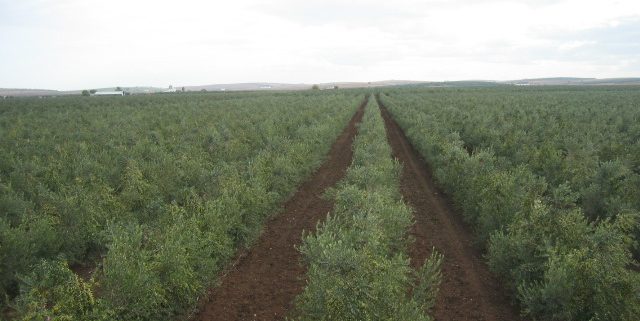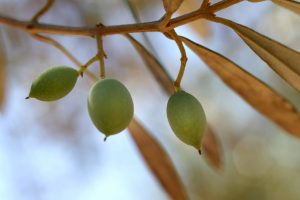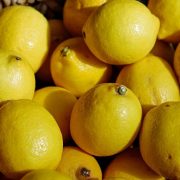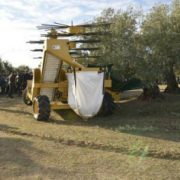Olive grove profitability wanted to adopt intensive systems
Three quarters of the world olive is cultivated according to traditional methods. Only 26% of the surface of this crop is handled in intensive systems, which increases the production of olive oil. These are among the findings of an international study on production costs of olive oil by the IOC and coordinated by AEMO and GEA Westfalia Separator Ibérica. The report confirms major differences between the costs of one country to another. The oil yield is higher in the South of the Mediterranean and is drastically reduced in Latin American countries. The global harvest for the season in 2015-2016 will be between the 2.6 and 2.9 million tonnes. The world’s largest producer, Spain is closer to 1.3 million tonnes. Argentina will increase its production to 25,000 tons, it is behind Chile (16,000 tonnes), United States (6,000 t), Peru (3,500 t) and 2,000 tons Uruguay.
The oil mill olive harvest is in full swing in the northern hemisphere. In most countries it looks dry and sunny weather in winter. “These circumstances have led to the maturation of the fruit forward and, when it has not yet come winter, many olive farms have already completed the collection over other long campaigns that concluded in January or February,” says Agri-food Cooperatives from Spain, which is the world’s largest: can potentially achieve maximum of 1.8 million tons, according to the International Olive Council (IOC).
They have already served two months since the campaign began olive oil from 2015 to 2016, and the largest in area and production area like Andalusia olive, highlighted an unusual cooperative campaign, “mainly by weather conditions which are characterized This late autumn and early winter almost, very dry and spring temperatures, around 20 degrees during the day, “according Agri-food Cooperatives of Andalusia.
In the absence of definitive data on what will bring the campaign of olive oil in Spain, the stock of the situation in its various olive growing areas that performed Cooperatives, reflecting production of olive oil to be approximately 1,240,000 tons. The potential for oil has decreased by climatic conditions. The previous crop was 835,000 tons. A harvest of over one million tonnes is expected in Andalusia, (+ 56.5%). It would be therefore a harvest around the average of the past six years, according to Agri-food Cooperatives. The second producing region, Castilla-La Mancha, is expected to produce 60,000 tons (+ 17.5%).
World production of olive oil
Globally the 2015-2016 campaign will have an output of 2.6 million tons, according to the capacity of the GEA Group, which recorded based on data from 500 institutions from 47 countries on five continents currently producing olive oil. Italy take on the second step of the production ranking with 330,000 tonnes (+ 50%); then Greece would stand, down around 17%, remaining at 240,000 tons, and Turkey, which would reduce production to 165,000 tonnes.
 Argentina increases its output
Argentina increases its output
The outcome of the IOC is “greater than the previous one in a + 22% campaign, the number of world production will be about 2.9885 million tons, the placed halfway between the last and penultimate campaign.” IOC member countries will reach a total production of 2.9 million tonnes, of which the European producing countries totaled about 2 million (+ 43%). After Spain (1.3 million tonnes), is Italy with 350,000 tonnes, Greece (300,000 tonnes) and Portugal (82,000 t).
Among the other countries producing olive oil, IOC members, there will be reductions in production, such as Turkey 143 000 t (-16%), Tunisia, with 140,000 t (-59%) and Lebanon with 20,000 t (- 5%), but also increases as that recorded Argentina, with 25,000 tons produced. Interestingly, for a country at war and Syria, the IOC production increases estimated to reach 215,000 tons. Morocco will have 130,000 tons.
For the rest of Latin America, Chile 16,000 tonnes, 6,000 tonnes in the United States, 3,500 tons and 2,000 tons in Peru in Uruguay are expected, according to a study of the company GEA Westfalia.
Stable world market
Trade in olive oil and olive pomace oil at the end of the 2014-2015 season (October 2014 – September 2015) shows an increase of 10% in Japan, with a strong increase of imports from March 2015, according to the IOC. In the United States and China are stable, however, decrease – 33% in Russia, -21% in Australia; -8% -7% In Brazil and Canada. In the first eleven months of the current year intra-EU acquisitions decreased 2% while extra-EU imports increased strongly + 311% over the same period of the previous year.
The need for intensive models
More than 70% of world olive grove is not profitable at below 2.2 euros per kilo in origin prices, according to the international study on costs of production of olive oil by the IOC and coordinated by Maria Isabel Gomez, head of the Department of Statistics IOC Jose Maria Penco, project manager AEMO and Juan Vilar, president of GEA Westfalia Separator Ibérica.
The study analyzed data from 15 major producers of olive oil IOC members, in which there are seven systems of growing olives, four traditional and three more intense, differentiating between dry and irrigated, high and moderate slope and as planting density and studied the production costs of each. The report notes that 74% of the global area of olive grown by traditional systems and 26% in intensive systems.
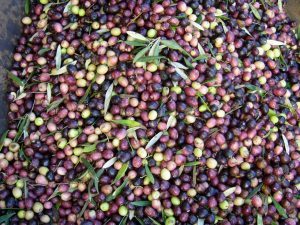 One of the main conclusions is that the arithmetic average price of production of a kilo of oil in the world amounts to 2.78 euros. Considering the surface weight of the different countries participating in the study, then the weighted average price of obtaining a kilo of oil in the world has proved to 2.63 euros per kilo. This average cost 2.33 euros correspond to field expenses and 0.45 euros to transport and milling costs. However, the study has identified large differences in cultivation costs between different producers and between the various farming systems countries. The weighted average cost countries significantly above the average are, in this order, Iran, Lebanon, Algeria, Uruguay, Italy and Israel. Countries with weighted average costs below average are Morocco, Tunisia and Turkey. The cost difference between countries is very high, being the highest average price in Iran (EUR 6.26 per kilo) and lowest in Turkey (1.93 euros per kilo).
One of the main conclusions is that the arithmetic average price of production of a kilo of oil in the world amounts to 2.78 euros. Considering the surface weight of the different countries participating in the study, then the weighted average price of obtaining a kilo of oil in the world has proved to 2.63 euros per kilo. This average cost 2.33 euros correspond to field expenses and 0.45 euros to transport and milling costs. However, the study has identified large differences in cultivation costs between different producers and between the various farming systems countries. The weighted average cost countries significantly above the average are, in this order, Iran, Lebanon, Algeria, Uruguay, Italy and Israel. Countries with weighted average costs below average are Morocco, Tunisia and Turkey. The cost difference between countries is very high, being the highest average price in Iran (EUR 6.26 per kilo) and lowest in Turkey (1.93 euros per kilo).
In general, countries where costs are more favorable for obtaining a kilo of olive oil in Mediterranean North Africa, particularly Morocco, Tunisia and Turkey. Therefore, it is expected that in the coming years grow olive growing in these areas, either by itself or outside capital. The report also notes that there are major differences between the costs of one country to another, while remaining in the same culture system, mainly due to different handling of olive growing and varying degrees of mechanization. Therefore, there is ample scope to reduce costs in countries with worse numbers, which could be achieved through technology and knowledge transfer, and continuing education.
The average production of olive oil worldwide is 816 kilos per hectare, and countries with greater production unit are Israel, Albania and Algeria, while the less productive are Italy, Iran, Morocco and Tunisia. The production of olive oil per hectare increases logically with intensive and irrigation systems, so that the range goes from 370 kilos per hectare olive grove in the traditional rainfed high slope to 1,579 kilos per hectare of irrigated olive superintensive . In addition, the oil yield is higher in countries of the southern Mediterranean, falling sharply in the South American countries.
Recommendations
Depending on the results, the study makes a number of recommendations aimed at improving the profitability of olive internationally. It is necessary to encourage conversion of olive groves towards more intensive farming systems wherever the terrain and other circumstances permit, says Juan Vilar. It also notes that it is essential to use promotion as a strategy to expand international demand. Meanwhile Jose Maria Penco, advocates enhancing the quality of oils and transmit to the consumer, making him understand that we have a product of high organoleptic, culinary and health value, will also be necessary to optimize the cultivation work, via mechanization beyond where possible and finally get a higher yield to the use of olive by-products, via research, source of income each day could be more important.
Source: COI, Cooperative Agro-food, AEMO, GEA Westfalia Separator Ibérica




